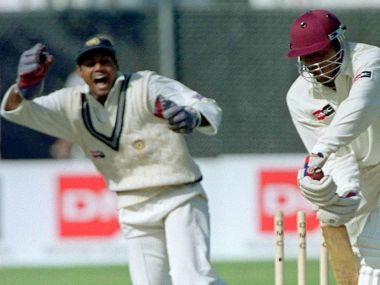Cricket’s comparative snobbishness is a peculiarity that sets the game apart. No other sport’s proponents look down on their own colleagues as cruelly as cricket. A first division league cricketer would be scoffed at by a one-match first class cricketer, who himself would be looked down upon by somebody who has played, say, 50 first class matches.
This comparative snobbishness goes all the way to the top. A one-Test cricketer would sneer at one who has played no Tests at all; just like someone who has played 30 Tests would turn snooty with the one-Test cricketer. Of course the ultimate bragging rights would be with those having played 100 Tests. He’d be the one with that halo over his head and lesser mortals would be just that – lesser mortals!
This is the reality of cricket. In no other sport is this sort of haughtiness prevalent. A Tiger Woods might have an aura about him. But in no way would he look down upon a 100th ranked professional golfer. Similarly football, basketball and a whole lot of other sport have champion sportsmen who through their dint would stand out from the rest of the crowd. However, they would never treat another of their ilk as anything less than equal. They’d respect their fellow sportsman, if nothing else.
But cricket being cricket, has encouraged a culture where those who have played maximum matches are reckoned the cat’s whiskers.
The first inkling that Indian cricket players and followers got that this was not necessarily the world order came with the advent of IPL, where players were being bought and sold for what was perceived as their market rate.
A classical example of this was current Indian coach Anil Kumble who, despite his brilliant bowling record for the country, went for a paltry $500,000 in the auction. His Karnataka teammate Robin Uthappa, who had at that time played comparatively little cricket, was bagged for $900,000, almost double Kumble’s price.
The IPL auctions were an eye-opener for many Indian cricket aficionados. Former cricketers along with brand managers advised franchise owners of the comparative worth of each cricketer. And there were many cricketers who could simply not take their perceived undervaluation.
It is in this context that any criticism of the “cricketing worth” of the new selection committee must be tempered. All five, MSK Prasad (chairman), Gagan Khoda, Sarandeep Singh, Jatin Paranjpe and Devang Gandhi between them might have played just 13 Tests and 31 ODIs but that’s not a reason to run them down.
Indeed the fact that two of them, Paranjpe and Khoda, have played no Tests at all while the others have barely been there cannot be grounds either for disqualification or scorn. The important thing would be their ability to suss out cricketing potential and give it the opportunity to flower.
A former chairman of the national selection committee, the late Raj Singh Dungarpur was a below average Ranji Trophy cricketer from Rajasthan. But he must be appreciated for the wisdom he brought to the table by selecting Sachin Tendulkar at the age of 16. He saw the potential in the erstwhile kid and took the brave step of blooding him on that difficult tour of Pakistan.
It is this sort of occasional inspirational selection that can make or mar a selection committee.
Frankly the selection of the Indian cricket team is one of the easiest jobs –12 to 13 players select themselves. Forget needing a selector, any decent curator of a state association can identify those 12 or 13 cricketers for the squad. The selection committee comes into play only for the choice of that one or two newcomers or recall of cricketers for a specific tour or pitch. Now how difficult can that be?
Inspired selections are a different matter altogether. It’s intuition, conviction and the ability to foresee what a young cricketer could become that are pivotal for this.
For instance, an 18-year-old Malcolm Marshall was selected to the West Indies team after playing just one first class match. He went on to become one of the greatest fast bowlers. Waqar Younis was picked for Pakistan after Imran Khan who was sick and at home watching television saw him bowl in a bank match.
Now these selections, like that of Tendulkar, are inspired choices and any selection committee which can make just one such choice would be deemed to have done an outstanding job.
Hence, criticism about the quantum of Tests played by the members of the new selection committee is downright silly The fact that the BCCI had to work under the Lodha Committee restrictions (below 60 years of age, after five years of retirement from playing cricket, must not be associated with an IPL team, must not be running a coaching committee, etc) did not give it much elbow room.
Nevertheless it would be extremely premature to praise or criticise this committee. If nothing else give them the time to ease into their seats, particularly with the Lodha Committee recommendations and critics cramping them.


)




)
)
)
)
)
)
)
)